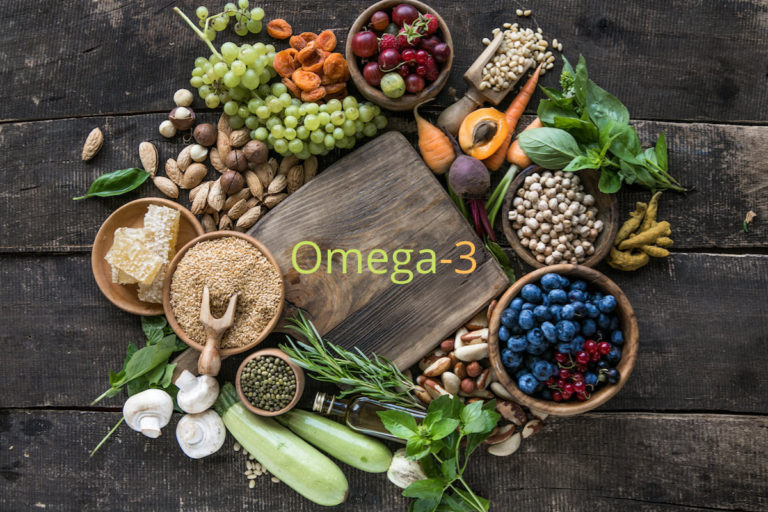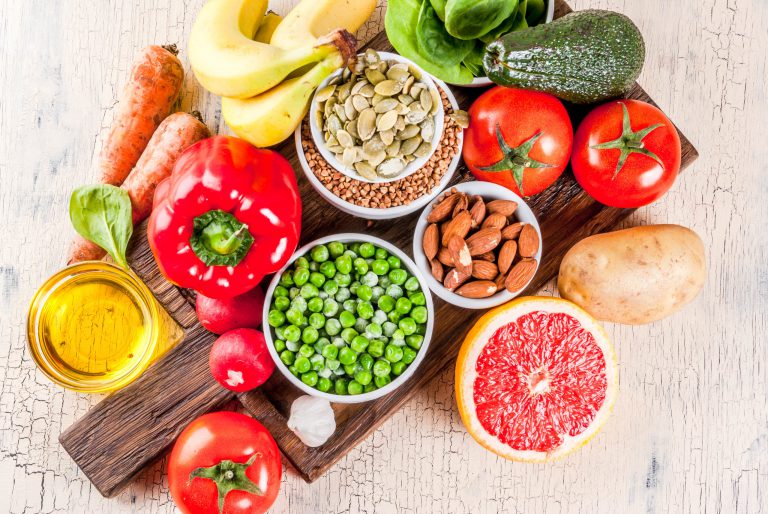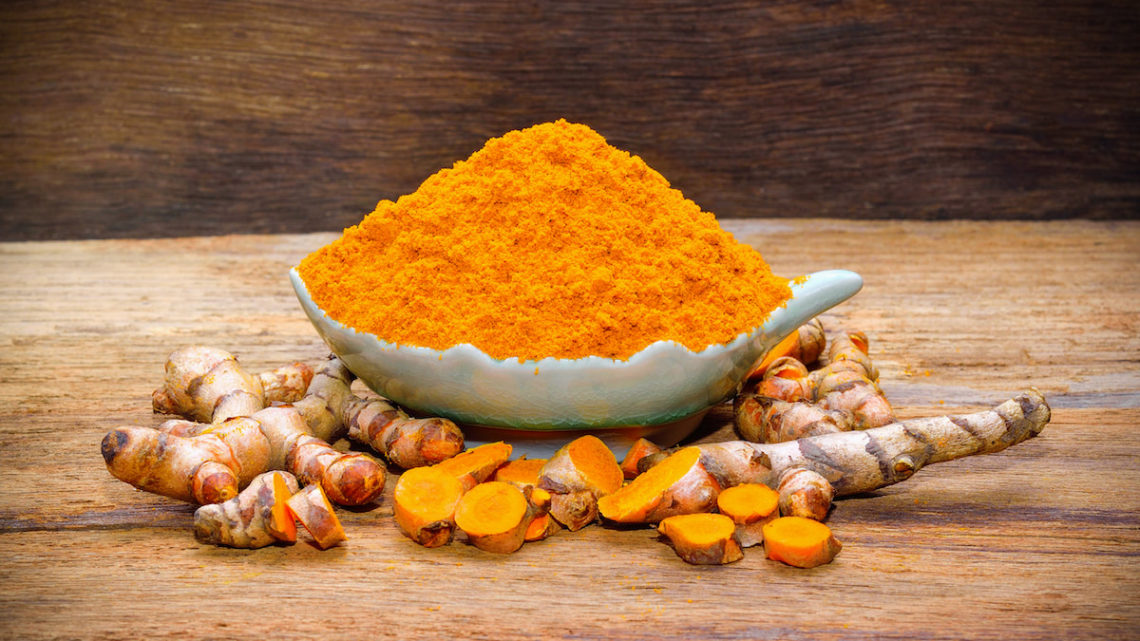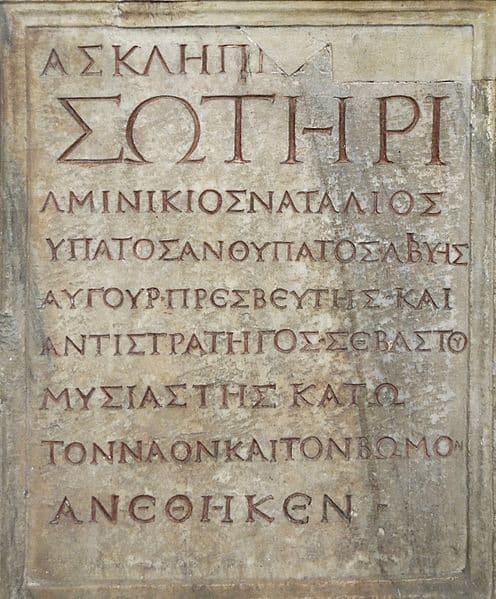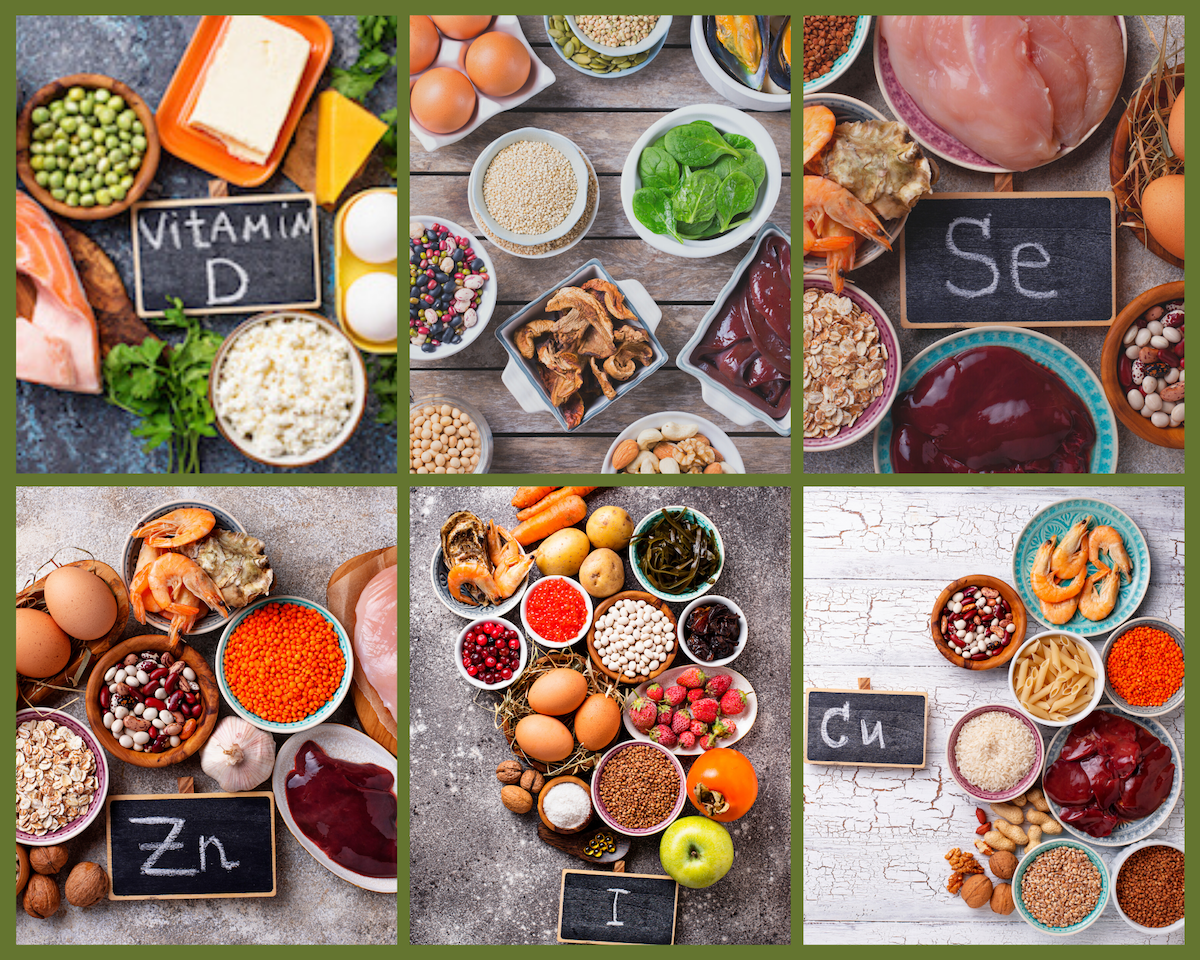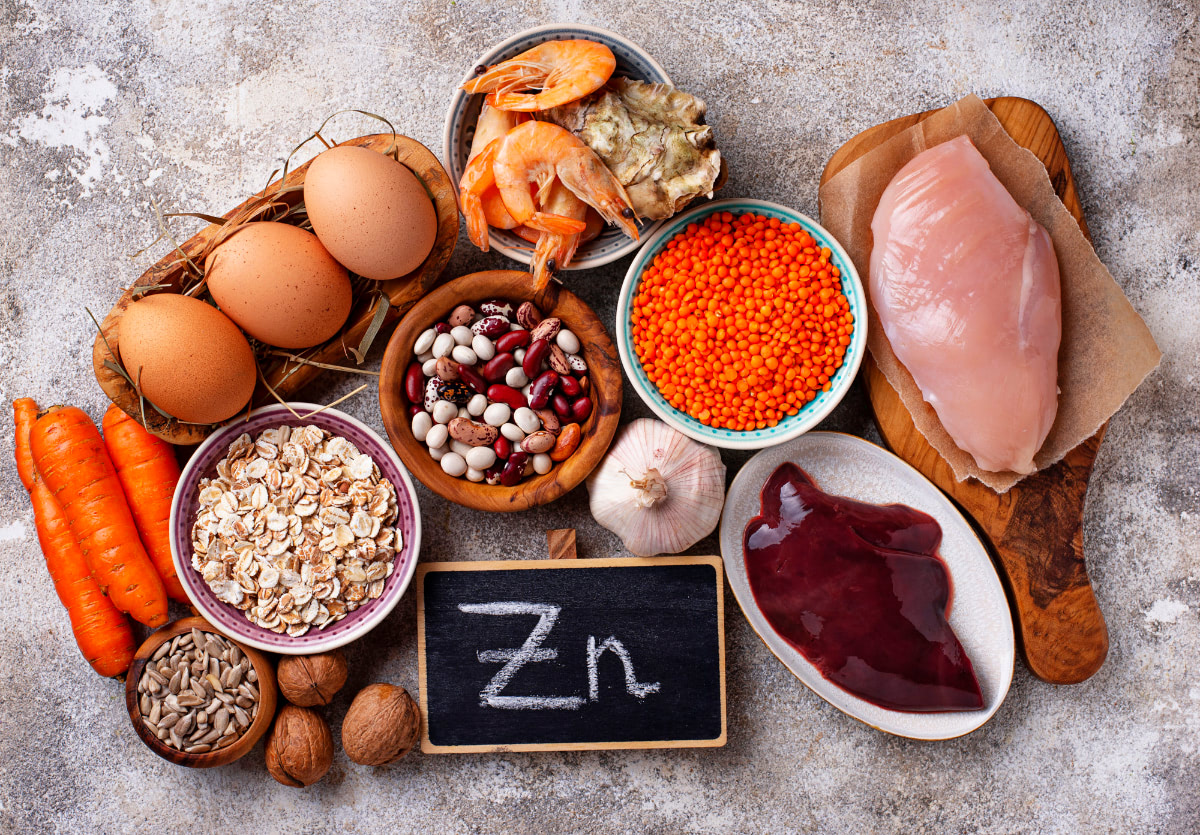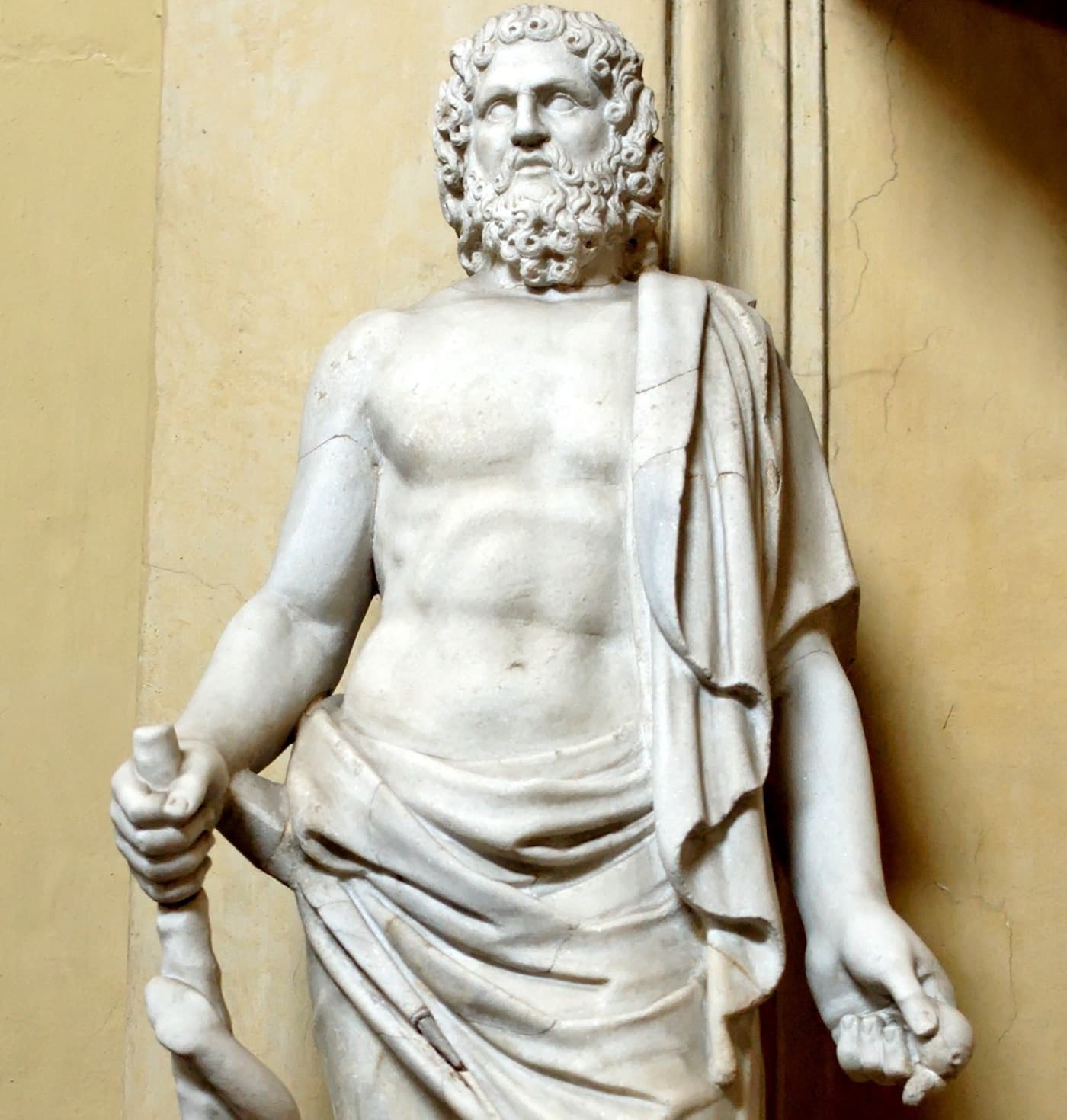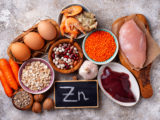Updated on 3. June 2022 from Marc Hedemann
Turmeric (Curcuma longa)
Reading time: approx. 20 minutes
The fascinating healing powers of turmeric
Turmeric, or scientifically denominated as curcuma longa, is a perennial herbaceous plant belonging to the Curcuma genus of the Zingiberoside (ginger) family. Turmeric’s tuberous rhizome (yellow root) is used as a spice (it may be used in place of ginger), dye, and medicinal herb.
“Indian gold” and “poor man’s saffron” have both been used to describe turmeric. These and other descriptions emphasize how important this Asian root is. Whilst being a popular cooking and diet condiment for adding color and taste to meals, its medicinal applications make it even more valuable.
Turmeric’s main component, curcumin, has powerful biological properties, which is why it’s utilized in Indian Ayurvedic medicine to alleviate chronic pain and inflammation. Its analgesic and therapeutic effects are also highly appreciated in Western medicine.[1]
With such a lengthy history of medical service, it is natural to be curious about its medicinal powers, benefits, and side effects. In this article you will learn all about the fascinating healing powers of turmeric.
Turmeric – History and Origin
Although native to India and Southeast Asia, the controversy of whether turmeric truly originates from either India or Asia is still debated by many experts today.
Ancient history references the use of turmeric as a cure for joint pain mentioned in one of the eldest Chinese medical treatises dating back to 2600 BC: Shen-Nung Pen-ts’ao (Divine Husbandman’s Materia Medica). At least 1500 distinct herbal medications have been examined, analysed, and employed in Chinese medicine, as described in more than 50 different or updated versions of Pen-ts’ao.[2,3,4]
Turmeric’s use stretches back approximately 4000 years to India’s Vedic period, when it was employed as a culinary spice as well as having religious importance. By 700 AD, it had made its way to China, East Africa, West Africa, and Jamaica in the seventeenth century. Marco Polo mentioned this spice in 1280, astonished at a vegetable with properties so close to saffron. Turmeric has a long history of therapeutic usage in South Asia, according to Sanskrit medical treatises and Ayurvedic and Unani traditions. Susruta’s Ayurvedic Compendium, which dates back to 250 BC, suggests using a turmeric ointment to treat poisoned food. [1]

Curcuma is derived from the Sanskrit word kartuma, which was derived from the Old Persian word kurkum, which is now spoken in Arabic as kurkum or kharkum. This spice swiftly spread over the Arabian Peninsula, the Near East, and the Middle East since it was traded during business transactions. As a result, it is used in traditional Arabic medicine as well.
Turmeric – Nutritional Facts
According to the USDA Nutrient Database, the nutritional value of turmeric per 100 grams:
| Carbohydrates | 67.14 g |
| – Sugar | 3.21 g |
| – Dietary fibre | 22.7 g |
| fat | 3.25 g |
| protein | 9.68 g |
| water | 12.85 g |
| Thiamine (vitamin B1) | 0.058 mg |
| Riboflavin (vitamin B2) | 0.150 mg |
| Niacin (vitamin B3) | 1,350 mg |
| Pyridoxine (vitamin B6) | 0.107 mg |
| Ascorbic acid (vitamin C) | 0.7 mg |
| Tocopherol (vitamin E) | 4.43 mg |
| Phylloquinone (vitamin K) | 13.4 μg |
| Calcium | 168 Mg |
| Iron | 55.00 mg |
| Magnesium | 208 Mg |
| Phosphorus | 299 Mg |
| Potassium | 2080 Mg |
| Sodium | 27 Mg |
| Zinc | 4.50 mg |
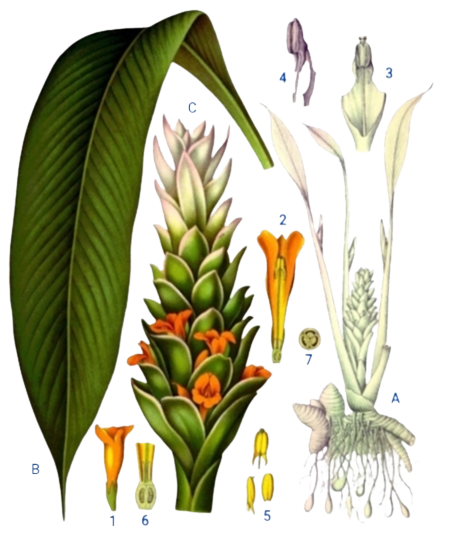
Turmeric (Curcuma longa):
A – plant
B – leaf
C – flower spike
1 – Flower
2 – Flower (in longitudinal section)
3 – Inner perigone
4 – Stamens (from side)
5 – Anthers (from different sides)
6 – Ovary (in longitudinal section)
7 – Ovary (in transverse section)
Turmeric – Properties
Turmeric, a spice with medicinal properties, has grabbed the interest of medical and scientific experts and culinary enthusiasts because it is the principal source of polyphenol curcumin. It aids in the treatment of oxidative and inflammatory conditions, metabolic syndrome, arthritis, anxiety, and hyperlipidaemia. It may also help cure exercise-induced inflammation and muscle soreness, letting athletes to recover more quickly and perform better.
Furthermore, even if a person does not have a known health problem, a low dose of the complex may provide health benefits. Its antioxidant and anti-inflammatory properties account for the majority of these benefits. Because of its limited bioavailability, which appears to be mostly attributable to poor absorption, fast metabolism, and rapid elimination, ingesting curcumin does not result in the related health benefits. Bioavailability can be increased by a number of factors.
For example, piperine, an alkaloid found in black pepper, has been demonstrated to improve bioavailability 20 times higher when coupled with curcumin in a complex. Curcumin, when coupled with other boosting agents, has a wide range of health advantages. [5]
A brief list of turmeric’s medicinal properties, some of which previously discussed, includes:
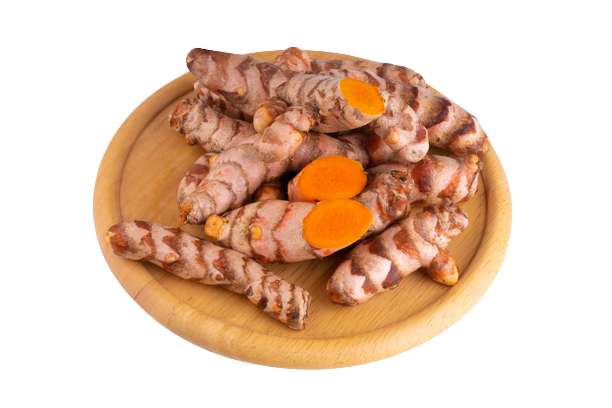
- It is naturally antimicrobial
- It is an anti-inflammatory spice with a lot of potency
- It strengthens the digestive system
- It contains hepatoprotective properties
- It promotes the regeneration and healing of the tissue
- It stimulates the immune system
- It has a blood sugar lowering effect on the body
- It has a hypolipidaemic effect
- It is considered a powerful antioxidant
Turmeric – Mechanisms of Action
Scientific research has found that turmeric has an important function in treating health problems. As a result, universities and medical laboratories around the world have spent a lot of time and effort learning more about this root.
Anti-Inflammatory Activity
Many chronic illnesses have been associated to oxidative stress, and its pathogenic processes are similar to those of inflammation in that one may readily be caused by the other. In essence, inflammatory cells are known to release a number of reactive species at the site of inflammation, resulting in oxidative stress, demonstrating the link between oxidative stress and inflammation.
Turmeric can be utilised as an anti-inflammatory in a variety of conditions due to its mechanism of action. It can therefore be an excellent alternative to anti-inflammatory medications (high efficacy and low toxicity), but it can also work in tandem with anti-inflammatory treatments to boost their effectiveness and lessen gastrointestinal adverse effects. Additionally, a variety of reactive oxygen/nitrogen species can also trigger an intracellular signalling cascade that boosts pro-inflammatory gene expression.
Inflammation has been linked to the development of a number of chronic illnesses and complaints, including:
- Bronchitis
- Depression
- Kidney ischaemia
- Brain injury
- Multiple sclerosis
- Parkinson’s disease
- Metabolic syndrome
- Cardiovascular diseases
- Alzheimer’s disease (AD)
- Acquired immunodeficiency syndrome (AIDS)
Following a 2009 study of preclinical and clinical research, curcumin was found to be a highly pleiotropic chemical that interacts with a variety of molecular targets involved in inflammation. Clinical experiments suggest that curcumin may have potential as a therapeutic agent in inflammatory diseases, based on early cell culture and animal studies. The therapeutic use of curcumin is limited due to its rapid plasma clearance and conjugation, which has led researchers to investigate the benefits of complexing curcumin with other compounds to increase systemic bioavailability.[6]
Antioxidant Activity
Most of the benefits of curcumin in the many diseases discussed in this article can be explained by its antioxidant and anti-inflammatory properties. Curcumin has been shown to improve oxidative stress indicators in the body. It has also been found to improve the serum activity of antioxidants such as superoxide dismutase (SOD).
In fact, curcumin can:
- scavenge free radicals like:
- superoxide anions, hydroxyl radicals,
- protect the cells from oxidative stress,
- the activity of antioxidant enzymes such as:
- superoxide dismutase,
- and repair radiation damage to proteins.
Curcumin is also a lipophilic molecule, making it an effective scavenger of peroxyl radicals. As a result, curcumin, like vitamin E, is called a chain-breaking antioxidant.
A recent systematic review and meta-analysis of randomized control data on the efficacy of purified curcuminoids supplementation on oxidative stress parameters found that curcuminoids supplementation had a significant effect on all investigated oxidative stress parameters, including lipid peroxides.[7]
Hepatic Activity
Alcohol, drugs, viral infections, environmental contaminants, and dietary components have all been linked to oxidative stress, which in turn is strongly related to the advancement of liver damage, non-alcoholic steatohepatitis, non-alcoholic liver disease, liver fibrosis, and cirrhosis.
Despite significant improvements in the care of liver disease over the last three decades, millions of individuals throughout the world continue to suffer from acute or chronic liver disease. Curcumin is one of the most widely utilized indigenous compounds, with a variety of shielding properties that protect the liver, as it is helpful in reducing intestinal gas while also being hepatoprotective.
Curcumin can be beneficial in several forms of oxidative related liver illnesses, according to a thorough assessment of cellular mechanisms of oxidative stress and clinical perspectives. Curcumin appears to have a pre-emptive and curative impact against oxidative liver disorders via numerous cellular signalling pathways, according to research. Curcumin intake at a high level in the daily regimen or as a dietary supplement, along with limited therapeutic choices, can provide ideal prevention and therapy for liver problems. [8]
Turmeric – Therapeutic Effects
We now understand that cellular oxidation and inflammatory processes play a role in the development of particular illnesses. Curcumin’s anti-inflammatory and antioxidant properties inhibited the progression of a variety of chronic diseases and complaints in various types and stages. Following that, we’ll look at the healing and prophylactic qualities of curcumin.
Arthritis
The terms “artho” and “itis”, meaning “joint” and “inflammation”, accordingly derive from the Greek language. Arthritis is a type of joint disease characterised by persistent inflammation in one or more joints that causes discomfort and can lead to paralysis. The more than 100 types of arthritis include rheumatoid arthritis, psoriatic arthritis and related autoimmune diseases.
The most prevalent is osteoarthritis, but other types include rheumatoid arthritis, psoriatic arthritis, and related autoimmune disorders. In spite of that the aetiology of various diseases differ, the symptoms and therapies are identical. Because osteoarthritis is a degenerative joint disease, the number of persons suffering from it is rising in tandem with the population’s aging. [9]
Despite the fact that arthritis produces inflammation and pain, the specific reason is unknown, and there is no cure for the underlying causes. Arthritis therapy aims to alleviate joint discomfort caused by inflammation, regular wear and tear, and muscle strains. Analgesics, steroids, and nonsteroidal anti-inflammatory medications (NSAIDs) are often used to treat arthritic symptoms such as severe pain and inflammation. [10,11]
Curcumin appears to be beneficial to several aspects of osteoarthritis, regardless of the mechanism by which it exerts its effects, as suggested by a recent study. The research investigated herbal treatments that can reduce pain and inflammation as potential primary or adjunct therapies for relieving arthritis symptoms. This comprehensive review and meta-analysis found that 8–12 weeks of therapy with standardized turmeric extracts can reduce arthritic symptoms (mostly pain and inflammation-related symptoms) and provide similar reductions in symptoms as ibuprofen and diclofenac sodium. As a result, turmeric extracts and curcumin may be used with caution in the treatment of arthritic symptoms, particularly osteoarthritis. [12]
Colitis
Inflammatory bowel disease (IBD) is a recurrent gastrointestinal disorder characterised by periods of exacerbation and remission. Ulcerative colitis (UC) and Crohn’s disease (CD) are the two most common manifestations. The aetiopathogenesis is thought to be due to a genetically determined intestinal microbiota intolerance associated with strong immunological responses and environmental variables.
Turmeric derivatives have been evaluated as adjuvants for some individuals with Crohn’s disease (CD) and ulcerative colitis (UC) who are resistant to traditional therapy. Some clinical trials employed this plant in the treatment of IBD due to its anti-inflammatory and antioxidant properties, and some meta-analyses compared the results of many investigations.
Based on a comprehensive assessment of randomised controlled clinical trials, the main objective of the research was to determine the efficacy and safety of curcumin as an adjunctive medication for maintenance or induction of remission in patients with inflammatory bowel disease (IBD). This research looked at six experiments. The systematic review includes all data from randomised controlled trials (RCTs) in patients with ulcerative colitis (UC). Curcumin was well tolerated in all RCTs, with no significant side effects. When taken in combination with conventional therapy, curcumin has been demonstrated in trials to be a safe and effective medicine for sustaining remission in UC. [13]
Another recent study published in 2020 concluded that a combination of mesalamine and curcumin therapy was linked to a nearly triple higher chance of a clinical response than placebo, with little side effects. This response was statistically significant, albeit there was some variability due to the various severity grading indices, curcumin doses, and drug administration methods employed. [14]
Cancer
Cancer is one of the top causes of mortality in developed countries. Because of early detection and better therapy options, the death rate has dropped in recent years. The rise of drug-resistant neoplasms, on the other hand, necessitates the quest for novel and more effective therapies. In cancer cells, signalling mechanisms such as proliferation, apoptosis, and angiogenesis are disturbed.
Finding successful new medications to treat cancer remains a challenging endeavour for many researchers. Plants, bacteria, and fungus create a number of active compounds that might be employed in medicine to cure a variety of illnesses (neurodegenerative, cardiovascular, inflammatory, cancers).
Curcumin’s anti-cancer potential is one of its biological properties, which has been extensively established and is still being researched. According to various assessments, curcumin impacts cell signalling pathways involved in cancer development and proliferation.
Based on a current study, curcumin is one of the most promising group of bioactive natural compounds, notably in the treatment of a variety of cancers. According to the review, curcumin has anti-cancer capabilities through targeting a variety of cell signalling pathways, including:[15]
- growth factors,
- cytokines,
- transcription factors,
- and genes that control cell proliferation and cell death.
According to another analysis regarding liposomal curcumin and its application in cancer, the liposomal curcumin formulation demonstrated stronger growth inhibitory and proapoptotic effects in cancer cells. In tumours of the lung, cervix, prostate, breast, osteosarcoma, and liver, curcumin has been demonstrated to have anti-cancer activities. Curcumin may be given via liposomes, a type of effective drug delivery system. Based on the review, liposomes have the potential to improve curcumin’s anticancer and pharmacological activities by improving its pharmacokinetics and pharmacodynamics while also lowering the amount necessary for tumour targeting. [16]
Asthma
Bronchial asthma is a chronic inflammatory lung condition that can be treated with a number of different medications, none of which are disease-modifying. Curcumin contains a number of properties, one of which is anti-inflammatory activity, which has been proven to be effective in the treatment of bronchial asthma in numerous in vitro and in vivo animal investigations.
A research looked at the effectiveness of curcumin as an additional therapy for patients with bronchial asthma. Curcumin tablets were shown to help reduce airway blockage, as demonstrated by a considerable improvement. Despite the lack of therapeutic effect, there was a significant improvement in haematological indicators, and the absence of clinically relevant adverse events implies that curcumin capsules have a stable safety profile. As a result, curcumin is an efficient and safe supplement for the treatment of bronchial asthma. [17]
Psoriasis
Psoriasis is a chronic inflammatory skin condition that also affects the joints, bones, tendons, ligaments, nails, and mucous membranes. The most frequent clinical form is “vulgaris,” which is characterised by round or oval erythematous lesions coated in silvery-white scales. Although skin lesions can appear everywhere on the body, they are most commonly found on the elbows, knees, scalp, and lumbar-sacral area.
Psoriasis affects around 4% of the world’s population. Dermatologically, the illness can be debilitating and unpleasant. The World Health Organization (WHO) recently highlighted, among other things, the restricted therapeutic choices for psoriasis sufferers. Furthermore, the therapy options available have a number of drawbacks. Many efficient treatment options are either too costly or unsuitable for hepatic patients, who make up a significant portion of psoriatic patients. This emphasizes the need for a low-cost, safe alternative.
Curcumin has lately been suggested as a realistic and safe psoriasis therapy alternative. Merely a few research papers have looked at the effectiveness of turmeric in treating psoriasis.
According to a case report analysis of the treatment of a patient with psoriatic arthritis using natural medicine, the combination of acupuncture, turmeric, sarsaparilla, and vitamin D could be a viable alternative or complement to pharmaceutical care. As a result of the therapy, the patient experienced less oedema and stiffness, increased range of motion, and reduction of pain in the afflicted fingers. [18]
Unfortunately, because this is a single case scenario, the treatment’s true effectiveness cannot be determined. To assess the true success of any therapy procedure adopted, more study is required. Although several studies have shown its efficiency and safety profile in vitro and in vivo, further placebo-controlled trials are needed before oral curcumin can be suggested as a credible psoriasis treatment.
Diabetes
Type 2 diabetes mellitus is a set of metabolic illnesses that has spread throughout the globe at epidemic proportions. Patients’ treatment, which includes lifetime pharmacological therapy and lifestyle adjustments, is extremely challenging due to the disease’s complexity. Curcumin, one of many medicinal plants, is gaining in popularity among scientists.
Turmeric has long been used to treat diabetes in Ayurvedic and traditional Chinese medicine. Because it is a fairly safe and economical medicine that decreases blood glucose and hyperlipidaemia in diabetic subjects, curcumin, the main component, has piqued attention as a possible treatment for diabetes and its complications.
Curcumin, according to a recent assessment, has therapeutic potential in the treatment of diabetes and its complications. The functional mechanism through which curcumin exerts its influence appears to be the modulation of many signalling molecules. This mechanism is not completely understood due to the disease’s complexity. Based on clinical studies, curcumin’s therapeutic efficacy looks to be promising. [19]
Depression
One of the most frequent and severe disorders is depression. Because standard drugs are ineffective, researchers are seeking for new medicines that target diverse biological systems to enhance treatment outcomes. Curcumin has been utilized in Ayurvedic medicine to treat anxiety and depression for hundreds of years. It has grabbed scientists’ interest in recent decades, as it appears to have a variety of features that are linked to the beginning of depression.
Due to the intricacy of the networks involved in depression, the unidimensional nature of existing antidepressant medication may be one factor explaining their poor performance, according to a narrative review. As a result, medications that target numerous processes have a higher chance of increasing therapeutic efficacy. Based on a range of processes described in the review, curcumin may find a place as an ameliorative treatment as a consequence of the aforementioned argument. According to a growing body of studies, curcumin looks to be a promising alternative choice for the treatment of depression. [20]
Multiple Sclerosis
Multiple sclerosis is an inflammatory and demyelinating illness of the central nervous system that mostly affects people in their 20s and 40s, with women being more affected (approximately 2-3 times more than men).
In recent years, a range of pharmacological drugs have been examined for the treatment of multiple sclerosis via various pathways, but they have demonstrated little therapeutic efficacy and have been related to negative long-term outcomes.
Curcumin has been shown to have therapeutic benefits in a range of pathologies and experimental settings, including neuroinflammatory illnesses like multiple sclerosis, according to a substantial body of research published in recent decades. [21]
Several clinical trials in multiple sclerosis patients have shown a small decrease in the severity and length of relapses. Curcumin, along with other dietary components, has been researched for its impact on the progression of multiple sclerosis illness. For that reason, curcumin has a bright future in the treatment of multiple sclerosis. [22]
Alzheimer’s Disease
Alzheimer’s disease is a neurological illness that worsens with time. It is marked by increasing cognitive deterioration, as well as a reduction in everyday activities and behavioural changes. It is the most frequent kind of dementia in both the presenile and senile stages. According to the World Health Organization (WHO), Alzheimer’s disease affects 5% of men and 6% of women over the age of 60 globally. [23]
Inflammation, oxidative damage, and, most critically, the development of metal toxicity are considered to play a role in the destruction of nerve cells in Alzheimer’s disease. Curcumin’s anti-inflammatory capabilities, according to researchers, might have a role in the treatment of Alzheimer’s disease, since both its antioxidant and anti-inflammatory properties help lessen the symptoms of Alzheimer’s disease produced by oxidation and inflammation.
Curcumin’s effects on Alzheimer’s disease have been studied in a number of ways. Some of the research and their findings are recapped below.
A recent study highlights curcumin’s distinct photophysical, chemical, and biological activities, as well as its properties throughout the course of Alzheimer’s disease. According to the findings, curcumin is an effective diagnostic tool for Alzheimer’s disease. Curcumin also has potential health benefits, such as lowering risk factors for Alzheimer’s disease and making it a life-long anti-aging nutraceutical. [24]
Curcumin will lead to a potential treatment for Alzheimer’s disease, based on the key results reported in another overview on the influence of curcumin on Alzheimer’s disease. Curcumin’s chemical characteristics, as well as its varied impacts on Alzheimer’s disease, have been explored in clinical trials, indicating the potential for more study and development of improved Alzheimer’s disease medications based on curcumin. [25]
Parkinson’s Disease
Parkinson’s disease is the most common neurological syndrome after Alzheimer’s disease. Parkinson’s disease is an age-related disease, which means that it occurs more frequently with increasing age. Mitochondrial dysfunction, oxidative stress and abnormalities in protein processing are the three main pathophysiological factors affecting cell function in Parkinson’s disease.
A drug that can either cure Parkinson’s disease or mitigate its progression has not yet been discovered. As part of novel strategies using natural chemicals with neuroprotective effects, curcumin is emerging as a viable supportive therapy for Parkinson’s disease.
According to a review published in 2021, the interaction of curcumin with nicotinic receptors provides proof of a possible neuroprotective impact of curcumin in Parkinson’s disease. Curcumin and its derivatives also have a favourable safety profile in in vitro and in vivo research in Parkinson’s disease models, with little reported toxicity. The evidence presented supports curcumin’s crucial molecular and cellular effects in neurodegenerative illnesses, making it a promising therapy and prognosis alternative for Parkinson’s disease. [26]
Metabolic Syndrome
The Metabolic Syndrome is becoming more common across the world, potentially due to bad lifestyle behaviours like a high-calorie diet, lack of physical activity, and smoking. It’s characterized as the presence of many obesity-related cardiovascular risk factors, such as:
- hyperinsulinaemia,
- abdominal obesity,
- hypertriglyceridaemia,
- low cholesterol level,
- and/or hypertension.
Relatively recent evidence suggests that some spices, such as curcumin, may play an important role in the management of overweight people. Curcumin consumption has been claimed to enhance weight and metabolic status by boosting basal metabolic rate, which might lead to higher energy expenditure. [27]
A comprehensive review and meta-analysis of randomized controlled trials were conducted to determine the impact of curcumin consumption on weight in individuals with metabolic syndrome and associated conditions. For the most part, the research concluded that curcumin consumption was associated with a substantial reduction in BMI, weight, waist circumference, and leptin, as well as a significant rise in adiponectin levels in individuals with metabolic syndrome and associated disorders, but had no effect on hip ratio. [28]
HIV/AIDS
Human immunodeficiency virus (HIV) is a virus that targets the immune system of the human body. Acute immunodeficiency syndrome (AIDS) can develop if HIV isn’t treated (AIDS). Antiretroviral treatment (ART) can significantly improve HIV/AIDS patients’ chances of survival and quality of life. These benefits, however, are frequently linked to metabolic changes and an increased risk of cardiovascular disease, both of which are difficult to control. [29]
Curcumin supplementation appears to be a viable option for HIV-infected people, according to scientific research. Because of the inflammatory process and oxidative stress generated by the HIV virus and antiretroviral treatment, metabolic changes occur, increasing the risk of cardiovascular problems. As a result, curcumin supplementation as a non-pharmacological approach appears to be a viable option for HIV-positive persons on antiretroviral therapy.
A randomized controlled trial concluded that curcumin supplementation did not alter energy substrate oxidation at rest or the body composition of physically active people living with HIV/AIDS on antiretroviral therapy, however, it did promote the elevation of serum triglyceride levels in HIV-infected subjects. The discovery of this bioactive molecule has sparked the development of novel pharmaceutical formulae and delivery technologies that might increase curcumin’s efficacy in the treatment of HIV/AIDS. [30]
Turmeric – Side Effects
Curcumin has a lengthy track record of being safe. Despite the fact that the compound’s safety has been verified, several undesirable side effects have been documented.
The maximum tolerated dosage and safety of a single dose of standardized powder extract, evenly milled curcumin were determined in a dose escalation trial. According to the data, curcumin appears to have great tolerance in high single oral dosages. A few participants, however, had diarrhoea, headache, rash, and yellow faeces for 72 hours. [31]
In addition, there are a few factors to consider when ingesting turmeric:
- It causes the stomach to produce more acid, which in some people can cause gastrointestinal pain and nausea.
- People who use blood thinners should avoid eating a lot of turmeric.
- It is not a good idea to take it if you’re pregnant or nursing.
FAQs
How do you prepare turmeric?
It is optional to peel the root. Because the skin is so thin, use a regular vegetable peeler or scrape with the edge of a knife to peel the turmeric rhizome carefully.
Then coarsely shred the root using a grater or cut it with a sharp knife.
Wear an apron or gloves while handling fresh turmeric root since it will discolour your fingers and fingernails. It’s also possible that your grater will be covered with a sticky orange residue. It should come off with a good scrub in hot, soapy water. To add flavour to a food or beverage, use shredded or diced turmeric.
How is turmeric used?
Turmeric is a culinary spice used to flavour meals and stews in many domestic recipes.
However, it is now widely available as powder, oil, tinctures, capsules, syrups, and dietary supplements, albeit, as with other alternative therapies, it must be evaluated by a health professional.
Some of its uses include:
- Turmeric oil. As a result of rheumatic inflammation and muscular contractures, it is frequently administered topically to irritated skin, as an insect repellent, and in massages on aching limbs.
- Food supplements. They aid in the creation of connective tissue, the preservation of bones, and the protection of cells against oxidative damage due to their anti-inflammatory, antioxidant, and antibacterial characteristics.
- Creams to help with joint ache. It improves joint soreness when combined with other natural compounds like arnica and devil’s claw.
How do you store turmeric?
Turmeric rhizomes can be stored in the refrigerator for up to two weeks if kept in an airtight container. The simplest approach for preserving them is to clean them with a light brush to remove any leftover dirt, then pat them dry before wrapping them in a paper towel and keeping them in an airtight bag or container.
To increase the shelf life of turmeric, it can be frozen. After slicing the turmeric, store it in an airtight jar. You may also freeze it whole, although sliced frozen turmeric is easier to work with. It will keep relatively fresh for up to 6 months in the freezer.
Are turmeric and ginger the same thing?
Although turmeric and ginger are someway related, they are not the same. Ginger is a root with a citrus and spicy flavour that is commonly used in herbal drinks. Turmeric, on the other hand, is somewhat fragrant, has an orange aroma and has a peppery, pungent, bitter flavour that is warm and somewhat spicy. Fresh turmeric has a brighter flavour, a stronger scent, and is somewhat less bitter than powdered turmeric, as well as being noticeably milder than ginger.
Is turmeric good for weight loss?
Indeed, one of the reasons why more and more people are advised to use turmeric is to lose weight. As discussed in the article’s part regarding turmeric’s therapeutic effect on metabolic syndrome, scientific research looks promising.
Turmeric works effectively since it cleanses the body and acts as a diuretic, allowing fat to be naturally flushed out. The active combination also encourages natural skin toning, so you’ll notice a more youthful appearance once you lose the first few kilograms. Because of the powerful way it cleanses your liver, it also aids in the removal of toxins that tend to slow down dieting processes.
Turmeric is an excellent ally in the weight-loss process for these reasons. It is crucial to stress that it should be taken with physical activity and a well-balanced diet. Ideally, under the guidance of an nutrition expert.
The web content of ÁYIO-Q.com is for your information and is in no way a substitute for personal advice or treatment by a qualified medical practitioner. The content of ÁYIO-Q.com cannot and must not be used to make independent diagnoses or for self-medication.
Sources:
[1] Prasad S, Aggarwal BB. Turmeric, the Golden Spice: From Traditional Medicine to Modern Medicine. In: Benzie IFF, Wachtel-Galor S, eds. Herbal Medicine: Biomolecular and Clinical Aspects. 2nd ed. Boca Raton (FL): CRC Press/Taylor & Francis; 2011. auf (https://www.ncbi.nlm.nih.gov/books/NBK92752/)
[2] Hou, J P. “The development of Chinese herbal medicine and the Pen-ts’ao.” Comparative medicine East and West vol. 5,2 (1977): 117-22. doi:10.1142/s0147291777000192 auf (https://www.worldscientific.com/doi/pdf/10.1142/S0147291777000192?download=true)
[3] Oe, Iken Honzō Wage Yakusei Zuko (Medical Herbs). A Japanese translation of Shen-nung pen ts’ao (Divine Husbandman’s Materia Medica). An online version of an exhibit held at the U.S. National Library of Medicine (NLM), National Institutes of Health (NIH), Bethesda Md., October 19, 1999 – May 30, 2000. auf (https://www.nlm.nih.gov/exhibition/chinesemedicine/books.html)
[4] Manase, Gensaku, and Gensaku Manase. Honzō wage. Japan: s.n., 1697. Available at NLM HMD Collection (NLM Call Number: WZ 250 M267h 1697)
[5] Shoba G, Joy D, Joseph T, Majeed M, Rajendran R, Srinivas PS. Influence of piperine on the pharmacokinetics of curcumin in animals and human volunteers. Planta Med. 1998;64(4):353-356. doi:10.1055/s-2006-957450. auf (https://www.thieme-connect.com/DOI/DOI?10.1055/s-2006-957450)
[6] Jurenka, Julie S. “Anti-inflammatory properties of curcumin, a major constituent of Curcuma longa: a review of preclinical and clinical research.” Alternative medicine review : a journal of clinical therapeutic vol. 14,2 (2009): 141-53. auf (https://pubmed.ncbi.nlm.nih.gov/19594223/)
[7] Amirhossein Sahebkar, Maria-Corina Serban, Sorin Ursoniu, Maciej Banach. Effect of curcuminoids on oxidative stress: A systematic review and meta-analysis of randomized controlled trials. Journal of Functional Foods. Volume 18, Part B. 2015. Pages 898-909. ISSN 1756-4646. doi:10.1016/j.jff.2015.01.005. auf (https://www.sciencedirect.com/science/article/pii/S1756464615000092)
[8] Farzaei, M. H., Zobeiri, M., Parvizi, F., El-Senduny, F. F., Marmouzi, I., Coy-Barrera, E., Naseri, R., Nabavi, S. M., Rahimi, R., & Abdollahi, M. (2018). Curcumin in Liver Diseases: A Systematic Review of the Cellular Mechanisms of Oxidative Stress and Clinical Perspective. Nutrients, 10(7), 855. doi:10.3390/nu10070855 auf (https://www.ncbi.nlm.nih.gov/pmc/articles/PMC6073929/)
[9] Johnson, Victoria L, and David J Hunter. “The epidemiology of osteoarthritis.” Best practice & research. Clinical rheumatology vol. 28,1 (2014): 5-15. doi:10.1016/j.berh.2014.01.004 auf (https://linkinghub.elsevier.com/retrieve/pii/S1521-6942(14)00005-9)
[10] Marcu KB, Otero M, Olivotto E, Borzi RM, Goldring MB. NF-kappaB signaling: multiple angles to target OA. Curr Drug Targets. 2010;11(5):599-613. doi:10.2174/138945010791011938 auf (https://www.ncbi.nlm.nih.gov/pmc/articles/pmid/20199390/)
[11] Suokas, A K et al. “Design, study quality and evidence of analgesic efficacy in studies of drugs in models of OA pain: a systematic review and a meta-analysis.” Osteoarthritis and cartilage vol. 22,9 (2014): 1207-23. doi:10.1016/j.joca.2014.06.015 auf (https://linkinghub.elsevier.com/retrieve/pii/S1063-4584(14)01124-8)
[12] Daily, James W et al. “Efficacy of Turmeric Extracts and Curcumin for Alleviating the Symptoms of Joint Arthritis: A Systematic Review and Meta-Analysis of Randomized Clinical Trials.” Journal of medicinal food vol. 19,8 (2016): 717-29. doi:10.1089/jmf.2016.3705 auf (https://www.ncbi.nlm.nih.gov/pmc/articles/pmid/27533649/)
[13] Coelho, M. R., Romi, M. D., Ferreira, D., Zaltman, C., & Soares-Mota, M. (2020). The Use of Curcumin as a Complementary Therapy in Ulcerative Colitis: A Systematic Review of Randomized Controlled Clinical Trials. Nutrients, 12(8), 2296. doi:10.3390/nu12082296 auf (https://www.mdpi.com/resolver?pii=nu12082296)
[14] Chandan, S., Mohan, B. P., Chandan, O. C., Ahmad, R., Challa, A., Tummala, H., Singh, S., Dhawan, P., Ponnada, S., Singh, A. B., & Adler, D. G. (2020). Curcumin use in ulcerative colitis: is it ready for prime time? A systematic review and meta-analysis of clinical trials. Annals of gastroenterology, 33(1), 53–58. doi:10.20524/aog.2019.0439 auf (https://www.ncbi.nlm.nih.gov/pmc/articles/PMC6928475/)
[15] Giordano, A., & Tommonaro, G. (2019). Curcumin and Cancer. Nutrients, 11(10), 2376. doi:10.3390/nu11102376 auf (https://www.ncbi.nlm.nih.gov/pmc/articles/PMC6835707/)
[16] Feng, T., Wei, Y., Lee, R. J., & Zhao, L. (2017). Liposomal curcumin and its application in cancer. International journal of nanomedicine, 12, 6027–6044. doi:10.2147/IJN.S132434 auf (https://www.dovepress.com/liposomal-curcumin-and-its-application-in-cancer-peer-reviewed-fulltext-article-IJN)
[17] Abidi, A., Gupta, S., Agarwal, M., Bhalla, H. L., & Saluja, M. (2014). Evaluation of Efficacy of Curcumin as an Add-on therapy in Patients of Bronchial Asthma. Journal of clinical and diagnostic research : JCDR, 8(8), HC19–HC24. doi:10.7860/JCDR/2014/9273.4705 auf (https://www.ncbi.nlm.nih.gov/pmc/articles/PMC4190737/)
[18] Martin B. R. (2020). Treatment of Psoriatic Arthritis With Acupuncture, Turmeric (Curcuma longa), Sarsaparilla (Smilax officinalis) and Vitamin D: A Case Report. Journal of chiropractic medicine, 19(3), 194–200. doi:10.1016/j.jcm.2019.12.005 auf (https://www.ncbi.nlm.nih.gov/pmc/articles/PMC7750830/)
[19] Pivari F, Mingione A, Brasacchio C, Soldati L. Curcumin and Type 2 Diabetes Mellitus: Prevention and Treatment. Nutrients. 2019;11(8):1837. Published 2019 Aug 8. doi:10.3390/nu11081837 auf (https://www.ncbi.nlm.nih.gov/pmc/articles/PMC6723242/)
[20] Ramaholimihaso T, Bouazzaoui F, Kaladjian A. Curcumin in Depression: Potential Mechanisms of Action and Current Evidence-A Narrative Review. Front Psychiatry. 2020;11:572533. Published 2020 Nov 27. doi:10.3389/fpsyt.2020.572533 auf (https://www.ncbi.nlm.nih.gov/pmc/articles/PMC7728608/)
[21] Xie, L., Li, X. K., & Takahara, S. (2011). Curcumin has bright prospects for the treatment of multiple sclerosis. International immunopharmacology, 11(3), 323–330. doi:10.1016/j.intimp.2010.08.013 auf (https://linkinghub.elsevier.com/retrieve/pii/S1567-5769(10)00267-5)
[22] von Geldern, G., & Mowry, E. M. (2012). The influence of nutritional factors on the prognosis of multiple sclerosis. Nature reviews. Neurology, 8(12), 678–689. doi:10.1038/nrneurol.2012.194 auf (https://www.nature.com/articles/nrneurol.2012.194)
[23] Fratiglioni, L., De Ronchi, D., & Agüero-Torres, H. (1999). Worldwide prevalence and incidence of dementia. Drugs & aging, 15(5), 365–375. doi:10.2165/00002512-199915050-00004 auf (https://link.springer.com/article/10.2165/00002512-199915050-00004)
[24] Chen, M., Du, Z. Y., Zheng, X., Li, D. L., Zhou, R. P., & Zhang, K. (2018). Use of curcumin in diagnosis, prevention, and treatment of Alzheimer’s disease. Neural regeneration research, 13(4), 742–752. doi:10.4103/1673-5374.230303 auf (https://www.ncbi.nlm.nih.gov/pmc/articles/PMC5950688/)
[25] Mishra, S., & Palanivelu, K. (2008). The effect of curcumin (turmeric) on Alzheimer’s disease: An overview. Annals of Indian Academy of Neurology, 11(1), 13–19. doi:10.4103/0972-2327.40220 auf (https://www.ncbi.nlm.nih.gov/pmc/articles/PMC2781139/)
[26] Nebrisi E. E. (2021). Neuroprotective Activities of Curcumin in Parkinson’s Disease: A Review of the Literature. International journal of molecular sciences, 22(20), 11248. doi:10.3390/ijms222011248 auf (https://www.ncbi.nlm.nih.gov/pmc/articles/PMC8537234/)
[27] Bercik P, Verdu EF, Foster JA, et al. Chronic gastrointestinal inflammation induces anxiety-like behavior and alters central nervous system biochemistry in mice. Gastroenterology. 2010;139(6):2102-2112.e1. doi:10.1053/j.gastro.2010.06.063 auf (https://linkinghub.elsevier.com/retrieve/pii/S0016-5085(10)01006-1)
[28] Akbari, Maryam et al. “The Effects of Curcumin on Weight Loss Among Patients With Metabolic Syndrome and Related Disorders: A Systematic Review and Meta-Analysis of Randomized Controlled Trials.” Frontiers in pharmacology vol. 10 649. 12 Jun. 2019, doi:10.3389/fphar.2019.00649 auf (https://www.ncbi.nlm.nih.gov/pmc/articles/PMC6582779/)
[29] Maggi P, Di Biagio A, Rusconi S, et al. Cardiovascular risk and dyslipidemia among persons living with HIV: a review. BMC Infect Dis. 2017;17(1):551. Published 2017 Aug 9. doi:10.1186/s12879-017-2626-z auf (https://bmcinfectdis.biomedcentral.com/articles/10.1186/s12879-017-2626-z)
[30] Silva, Tatiane Andreza Lima et al. “Influence of curcumin supplementation on metabolic and lipid parameters of people living with HIV/AIDS: a randomized controlled trial.” BMC complementary and alternative medicine vol. 19,1 202. 6 Aug. 2019, doi:10.1186/s12906-019-2620-7 auf (https://www.ncbi.nlm.nih.gov/pmc/articles/PMC6685220/)
[31] Lao CD, Ruffin MT 4th, Normolle D, et al. Dose escalation of a curcuminoid formulation. BMC Complement Altern Med. 2006;6:10. Published 2006 Mar 17. doi:10.1186/1472-6882-6-10 auf (https://bmccomplementalternmed.biomedcentral.com/articles/10.1186/1472-6882-6-10)


